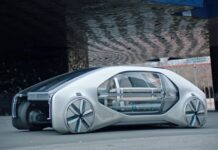If transportation is what drives the global economy, then electrification is what is changing the way we move today and will continue to do so in the future. With the world population moving up and almost at 8 billion this year, the earth needs some respite. The environmental impact of pollution caused by the mobility industry has to be brought down. The good news is that today’s consumers are increasingly gaining awareness about the issue that exists and there is an unparalleled demand for efficient and environmentally friendly transportation in the world market. This has also been driven by the stricter government regulations that are coming up. With fuel savings of 35% in hybrid-electric ferries versus traditional and a 30% reduction in greenhouse gas emissions in electric vehicles compared to combustion engine vehicles, the change is of course inevitable.
For the industry, there is a need to quickly find mobility solutions that have a lower environmental impact. For the mobility industry, this is both an opportunity and a challenge.
EV product development
The mobility industry is today investing heavily in EV product development to capture the opportunity that EVs bring. With EV sales projected to reach $823.75 billion by 2030, engineering teams have no time to lose. The three key product attributes of Safety, Efficiency and Affordability become key for engineering teams making these EVs.

- EV Battery Pack
While all this is being considered, there is also the key challenge of the EV battery pack for engineers. Even with the significant drop in the cost of high-capacity lithium-ion batteries, there are issues that exist when it comes to the safety of Li-ion batteries, the small drive range per charge and of course the general know-how when it comes to their performance degradation over time.
The long-term effects of temperature, climate and weather exposure, usage patterns, driving speeds, high and low charge states, and electric current variations on their battery designs are all factors that need consideration in order to be able to develop a viable commercial EV battery design. Product development teams need to understand that only then can EVs be counted on to deliver years of reliable performance.
With the EVs being relatively new, there is a lack of real-world data that has been gathered with respect to battery performance. The excessively expensive physical prototypes and road tests are also time-consuming considering the urgent nature of this engineering challenge.

In the ongoing wave of the EV revolution, new models are being introduced at a fast pace. Specialised processes are required in the research and development of each component of the EV in order to be able to keep up with this rising demand. There are also risks involved in assembled products as we have seen with the EV scooter fire incidents. It is thus essential for OEMs and suppliers to rethink their engineering when it comes to electric vehicles.
The answer, when it comes to multiple product design issues, lies in engineering simulation.
Engineering Simulation
Today’s transportation demands create a need for innovation that is radical. It is only those companies that can deliver these innovations that can stay competitive in the market. The need of the hour is to make those right technology decisions in a time-efficient manner. Simulation plays a key role when it comes to electrification.
Simply put, the integration of these new technologies has also given the emergence of new development processes. And that is where modern tools like 3D simulation software and virtual system integration can help legitimise prototypes even before they take their physical forms.
Driving Rapid Battery Verification with Digital Twin
End-to-end simulation capabilities for battery design have enabled engineers to understand and manage thermal issues, create battery management systems, and overcome other challenges for some time now. Unique simulation solutions can today fully replicate the performance of EV batteries under real-world conditions over time with the digital twin.
A digital twin is a simulated virtual replica of a working product. It makes it possible for engineers to apply real-world operating parameters and study their actual impacts on the road. Digital twin for battery aging can accurately predict battery degradation over time.
An EV battery system can also be replicated virtually. Using sensors mounted on an actual battery, engineers feed real-time performance data into a simulated model of that battery. To save time and computing effort, the solution relies on proprietary reduced-order modeling (ROM) capabilities that focus on key performance aspects. This ROM cuts the run times to seconds from what otherwise can take hours. They simplify computational complexity and yet deliver extremely rigorous engineering analysis.
Lithium-ion battery
While it’s impossible to look inside a working lithium-ion battery, virtual validation and a digital twin help expose the scene as the design is being subjected to various thermal, chemical, mechanical, electrical, and other changes. Fluid flows, structural stresses, materials degradation, and temperature changes can be visualized by the product development teams.
Post the detection of performance deviations and failure modes, engineers can correct them with new physical design features such as cooling systems, improved control algorithms and battery aging. Thus, there is a fast-tracking of the development cycle since there isn’t a need to build physical prototypes or even to remove working products from service.
Engineers can use the digital twin to look at long-term EV battery performance under a range of conditions through transient studies and predictive analytics. The product development team can run a variety of what-if studies on the digital twin without subjecting the actual working product to every possible operating condition.
Questions pertaining to the safety of the operation of the battery, the number of times the vehicle can be started without overheating the battery pack and how the different temperature-control strategies affect the range of the vehicle, can be answered.
Apart from identifying and preventing failure modes, engineers can even customize battery designs to certain geographic regions based on their terrain, local driving behaviours, and atmospheric conditions. In India itself, the temperature varies in different parts. Based on the patterns – cold, tropical, hot and others, variations can be made in the operating conditions so that product offerings can be made based on geographies.
Digital Twin also allows EV developers to anticipate repair and maintenance needs upfront when introducing new battery designs. This avoids consumer complaints and paves the way for longstanding satisfaction and allegiance.
Simulation Leading EV Innovation
With rising market pressures coupled with an implausible revenue opportunity. Radical EV battery designs are fast approaching. The key market distinguisher will be decided based on who will be the first to launch and verify it. A competitive edge is what simulation can provide.
Simulations can determine thermal dependency on electric performance, design cooling supply, calculate temperature distributions, and predict battery life. Digital Twin can also help developers avoid costly battery failures and product recalls, optimize maintenance and repair, and reduce product development time and costs. In summary, electrification is bringing about a transformation in products along with unprecedented newer opportunities and challenges. An equal transformation in the product development process will help organisations to survive through and develop safe, reliable and high-quality vehicles.
About the author:

Mr Rafiq Somani is Area Vice President – India and South Asia Pacific at Ansys















